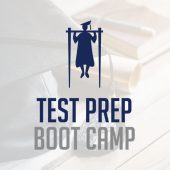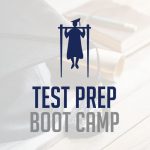You don’t have to take every test until you get the score you’re looking for. With a little planning, you can cut the tests down to 2, and maybe even just 1. Once you’ve done that, spend the time you would have spent testing doing something that is good for humanity.
One big warning
You may hear from time to time that the curve on some test dates are better than others. Admittedly, I used to find anecdotal truth to some of this. Check out this great podcast that talks about how the SAT score is determined. The big takeaway is that the curve is set before students ever sit down to take the test. One test date isn’t going to favor you over another in that way.
Picking the right dates
Even though the scale is set in advance, not all test dates are like the others. You have three big  considerations when it comes to which test dates are right for you.
considerations when it comes to which test dates are right for you.
First, you want to be sure you’ve had the chance to take the test at least twice as you head into the summer before your Senior year. This will give you the best idea of how your score lines up with the schools you’re applying to. It can also help you revise that list.
Your second consideration relates to when the tests are offered. Both the SAT and ACT have 7 national administration test dates. The exact date changes from year to year, but you can generally anticipate the dates based on the previous year. If the SAT offered a test on the first weekend of October this year, they’ll probably offer it at about the same time the next year. The same is true for the ACT. In addition, both services offer “school day” tests.
“School day” tests are what the name implies. The testing agency works with schools to offer the tests on a specific school day on campus. These tests are typically in October and March (SAT) or April (ACT). In some states, the school day test is related to state testing requirements.
TIR and QAS dates
More importantly, both the SAT and ACT have a service where you can get access to the exact test you took. College Board calls this the “Question and Answer Service” (QAS) and ACT calls it the “Test Information Release” (TIR). Each program has some other differences. ACT is going to send you a paper copy of the test you took. It won’t be your actual test booklet, but it will be a hard copy. College Board is going to give you online access to a digital copy of the test.
With either service, these tests are your best opportunity to improve on your previous test score. Without a copy of the test, students often have to guess and which question a particular one might have been. With the QAS or TIR, students can see exactly which questions they missed and determine the mistake they made. These services provide a sort of game film for students to review.
Aligning the test dates with the typical school year, the QAS tests for the SAT are October, March, and May. The TIR dates for ACT are December, April, and June. You want to be sure to include a QAS or TIR date into your test dates.
The MOST important detail

Testing sheet
Your most important consideration is when you take Algebra II. Approximately 2/3 of the math sections on both tests have questions that need a solid foundation in Algebra, the sort of foundation most students do not get until they have completed Algebra II. You’re going to get that foundation when you complete Algebra II. You won’t gain an advantage by investing thousands of dollars in a tutor in order to be ready sooner.
With those three things in mind here is my recommendation for the perfect test dates.
| When do you take Algebra II? | First SAT | Second SAT | First ACT | Second ACT |
| Sophomore year or earlier | October
Junior year |
December Junior year | December Junior year | February Junior year |
| Junior year or later | March
Junior year |
June
Junior year |
April
Junior year |
June
Junior year |
Using that schedule allows you to get 2 tests in with the first one being a QAS or TIR test date. It also gives you the opportunity to take a 3rd test if needed at the start of your Senior year.
Think about other conflicts
You may want to consider some other things when looking at test dates. For example, the May test date for the SAT usually lands the Saturday before AP exams start. If you’re planning on taking 2 or more AP exams, you probably won’t have the time you need to also study for the SAT. On the other hand, the May test can be a great time to take subject tests aligned with your AP classes if you are going to need subject tests for your applications.
Need a customized prep plan? Check out our test prep planning app. Answer a few critical questions and get a test prep plan that is right for you.







